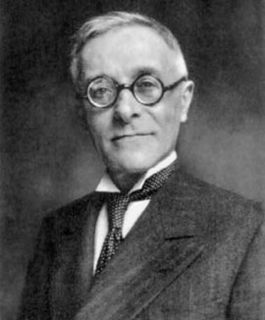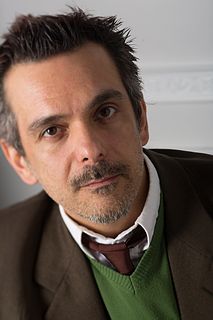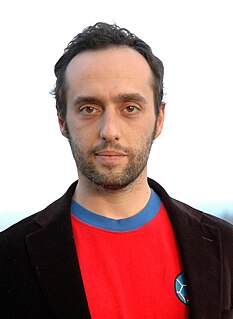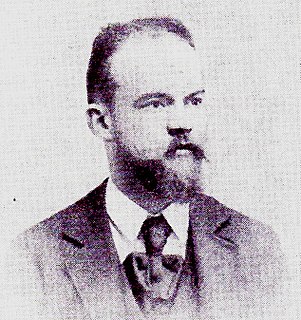
Emilia-Romagna is one of the 20 administrative regions of Italy, situated in the north of the country, comprising the historical regions of Emilia and Romagna. Its capital is Bologna. It has an area of 22,446 km2 (8,666 sq mi), and about 4.4 million inhabitants.

Tullio Levi-Civita, was an Italian mathematician, most famous for his work on absolute differential calculus and its applications to the theory of relativity, but who also made significant contributions in other areas. He was a pupil of Gregorio Ricci-Curbastro, the inventor of tensor calculus. His work included foundational papers in both pure and applied mathematics, celestial mechanics, analytic mechanics and hydrodynamics.

Stefano W. Pasquini is an Italian contemporary artist, writer and curator living in Italy.
He works with paintings, performance, photography and installation. He also publishes a magazine called Obsolete Shit.

The Cispadane Republic was a short-lived client republic located in northern Italy, founded in 1796 with the protection of the French army, led by Napoleon Bonaparte. In the following year, it was merged with the Transpadane Republic to form the Cisalpine Republic. The Cispadane Republic was the first Italian sovereign State to adopt the Italian tricolour as flag.

Franco Fontana is an Italian photographer. He is best known for his abstract colour landscapes.

Bologna Guglielmo Marconi Airport is an international airport serving the city of Bologna in Italy. It is approximately 6 km (3.7 mi) northwest of the city centre in the Emilia-Romagna region of Italy. The airport is named after Bologna native Guglielmo Marconi, an Italian electrical engineer and Nobel laureate.

The Sala del Tricolore, formerly the Patriotic Hall, is an historical hall that currently serves as the council chamber of the comune of Reggio Emilia, northern Italy. It was designed by the architect Lodovico Bolognini as the archive of the ducal family of Este. In the Sala del Tricolore, on 7 January 1797, the flag of Italy was born, hence the name of the hall. Adjacent to the room is the Tricolour Flag Museum, whose collection is made up of relics related to the Italian flag.

Enrico Brizzi is an Italian writer. He is best known for his debut novel Jack Frusciante Has Left the Band, which is so far the only one translated into English. It also inspired the same name Italian movie in 1996.
Pietro Paltronieri, also referred to as il Mirandolese (1673–1741) was an Italian painter of the late Baroque period, known for his capricci and active mainly in Rome, Bologna, and Vienna.

Luigi Federzoni was a twentieth-century Italian nationalist and later Fascist politician.

The Milan–Bologna railway is the northern part of the traditional main north–south trunk line of the Italian railway network. It closely follows the ancient Roman Road, the Via Aemilia. The line was opened between 1859 and 1861 as a single-line railway, and was doubled between 1866 and 1894. It was electrified at 3,000 volts DC in 1938. High-speed trains on the route have used the parallel Milan–Bologna high-speed line since 13 December 2008.
Hera S.p.A is a multiutility company based in Bologna, Italy. Hera operates in the distribution of gas, water, energy, and waste disposal in the provinces of Bologna, Ferrara, Forlì-Cesena, Modena, Ravenna, Rimini, Pesaro and Urbino, and in some municipalities of Florence and Ancona.

Giuseppe Rensi was an Italian philosopher.
Paolo Consorti is an Italian artist and film director.
The following is a timeline of the history of the city of Modena in the Emilia-Romagna region of Italy.

Tricolour Day, officially National Flag Day, is the flag day of Italy. Celebrated on 7 January, it was established by Law 671 on 31 December 1996. It is intended as a celebration, though not a public holiday. The official celebration of the day is held in Reggio Emilia, the city where the Italian tricolour was first adopted by an Italian sovereign state, the Cispadane Republic, on 7 January 1797.
The following is a timeline of the history of the city of Forlì in the Emilia-Romagna region of Italy.

Campanino, also known as mela modenese, transl. Modenese apple, or mela della nonna, transl. grandmother's apple, is a variety of the domestic apple. Thanks to its long shelf life, the Campanino has been popular not only in Italy but also in export to countries such as Germany.

The cockade of Italy is the national ornament of Italy, obtained by folding a green, white and red ribbon into a plissé using the technique called plissage (pleating). It is one of the national symbols of Italy and is composed of the three colours of the Italian flag with the green in the centre, the white immediately outside and the red on the edge. The cockade, a revolutionary symbol par excellence, was the protagonist of the uprisings that characterized the Italian unification, being pinned on the jacket or on the hats in its tricolour form by many of the patriots of this period of Italian history. During which, the Italian Peninsula achieved its own national unity, culminating on 17 March 1861 with the proclamation of the Kingdom of Italy. On 14 June 1848, it replaced the azure cockade on the uniforms of some departments of the Royal Sardinian Army, while on 1 January 1948, with the birth of the Italian Republic, it took its place as a national ornament.

Nicola Zamboni is an Italian sculptor.















